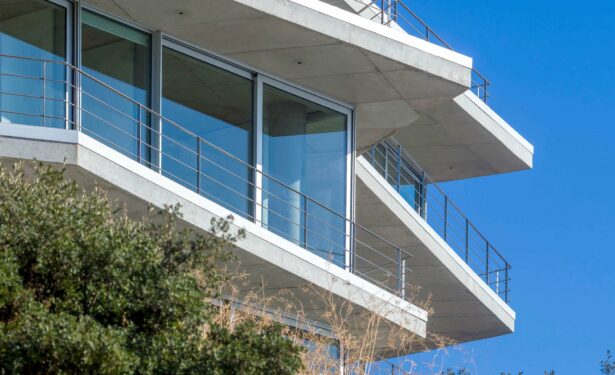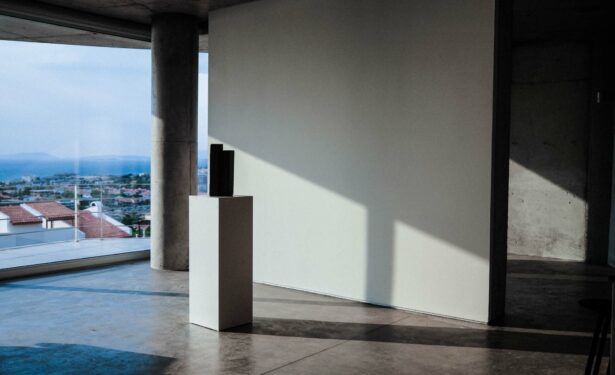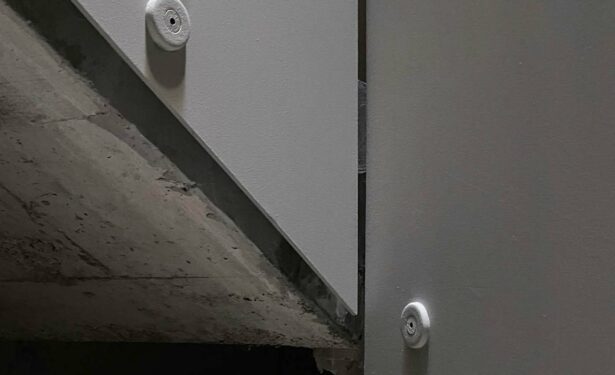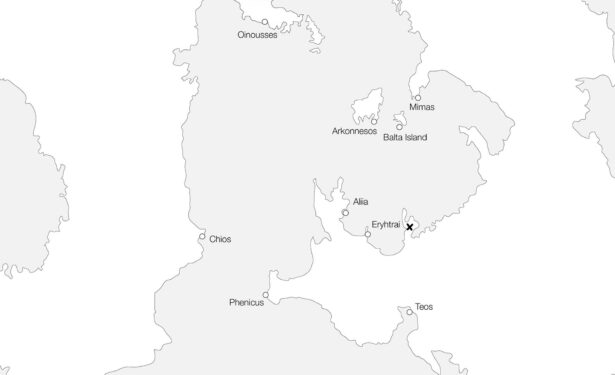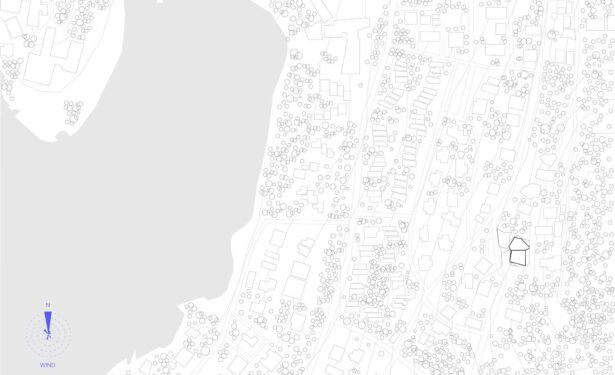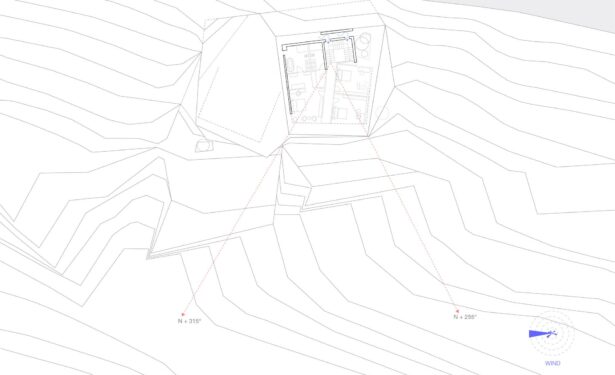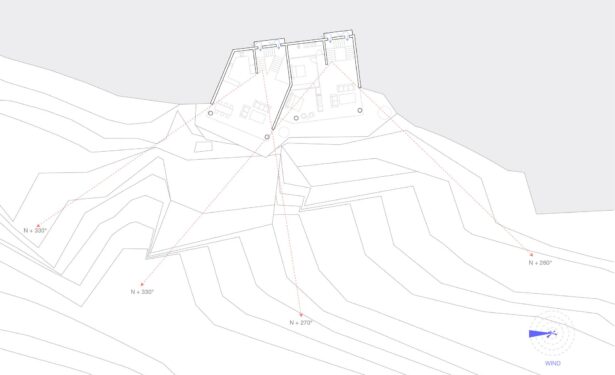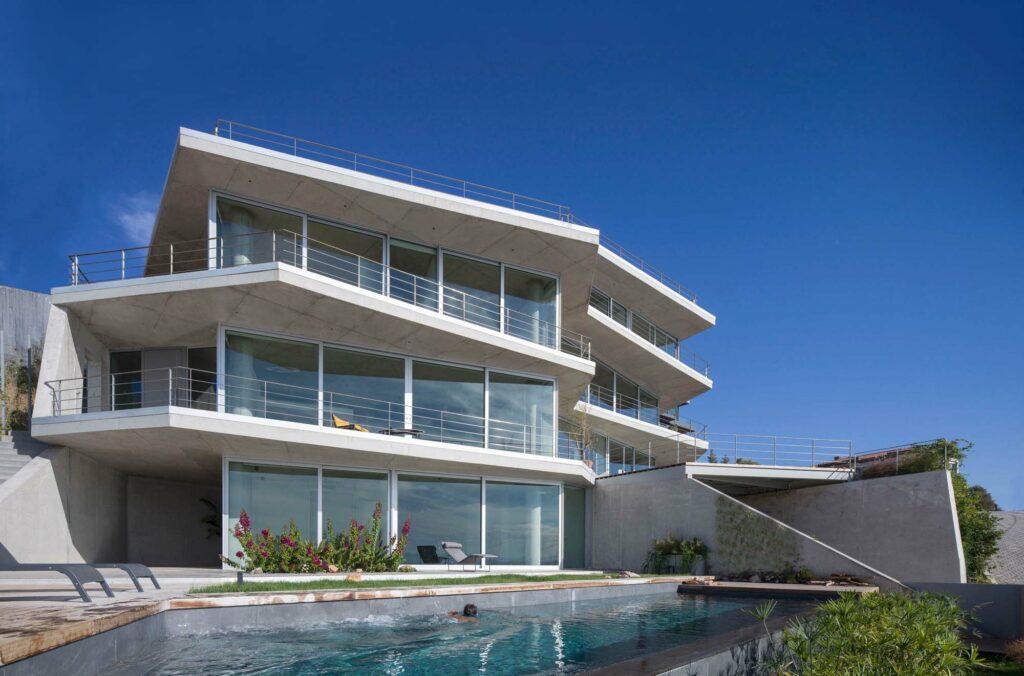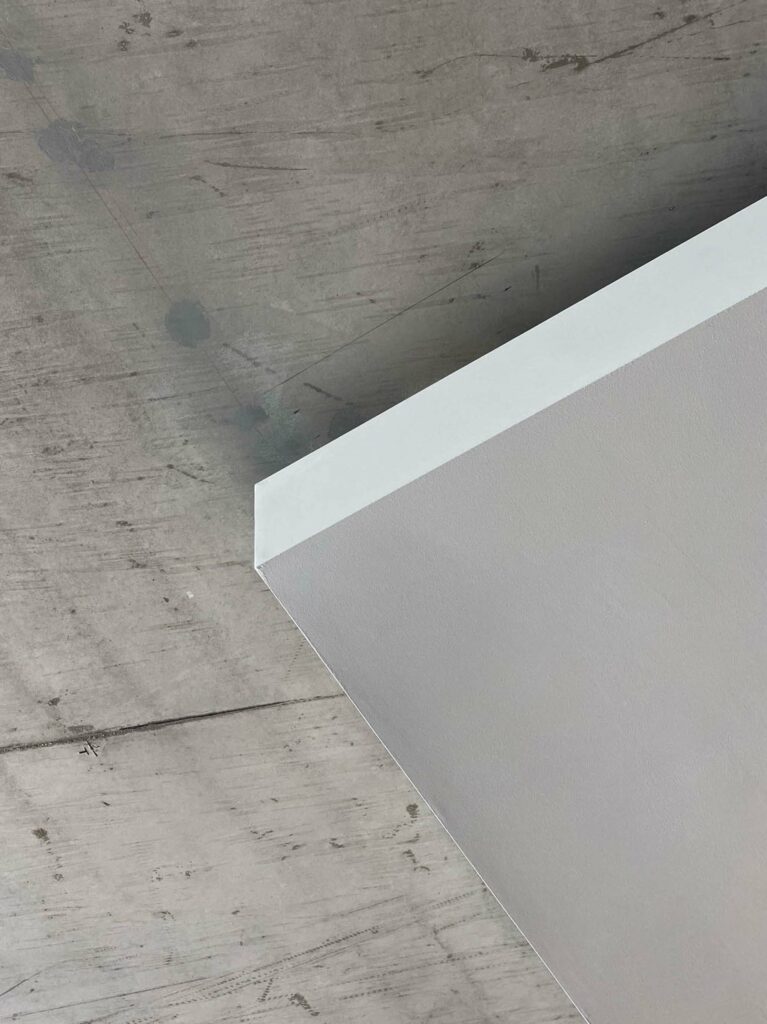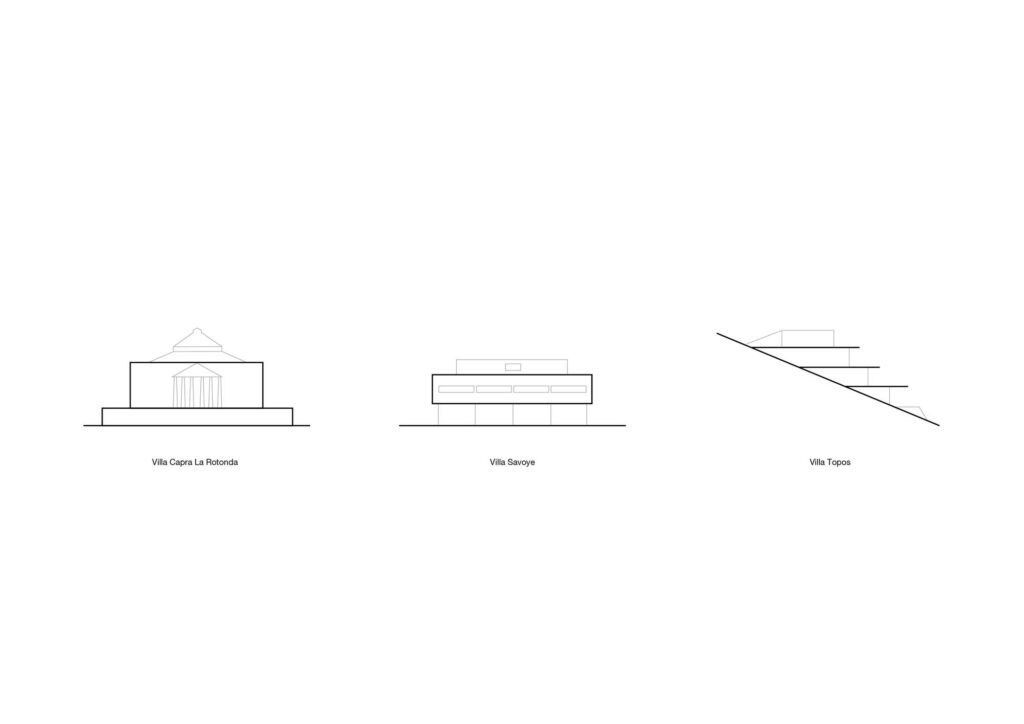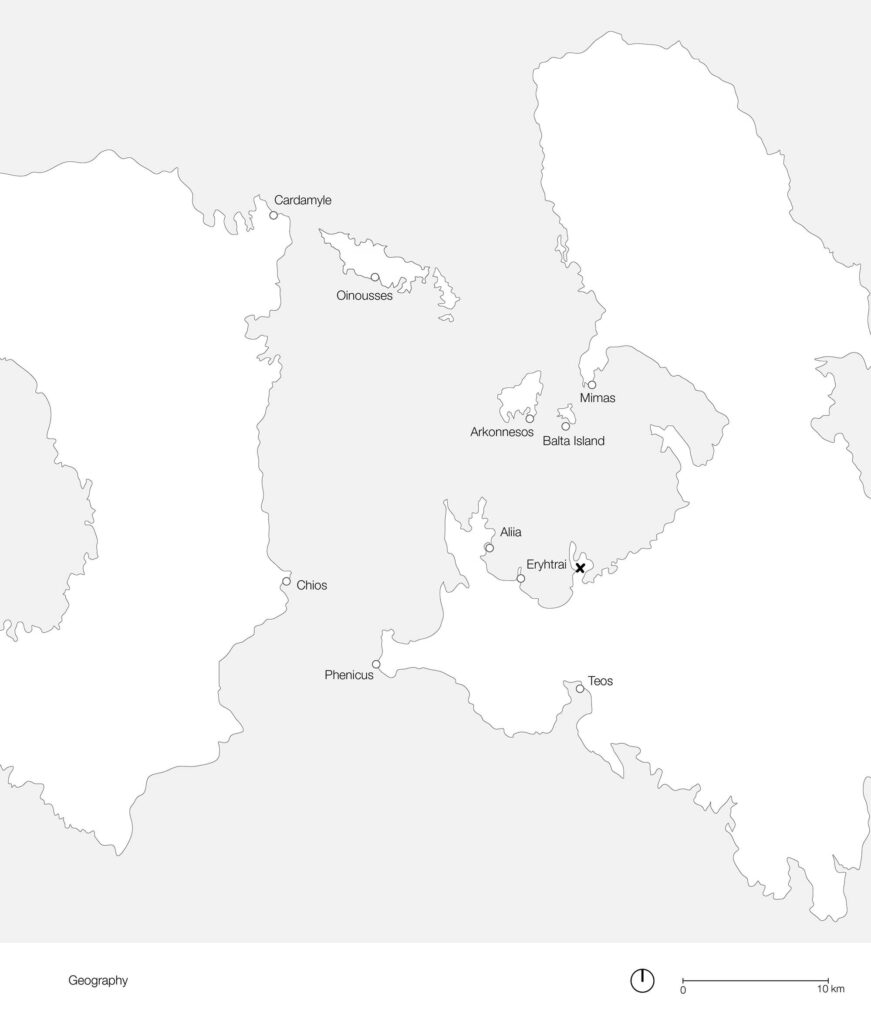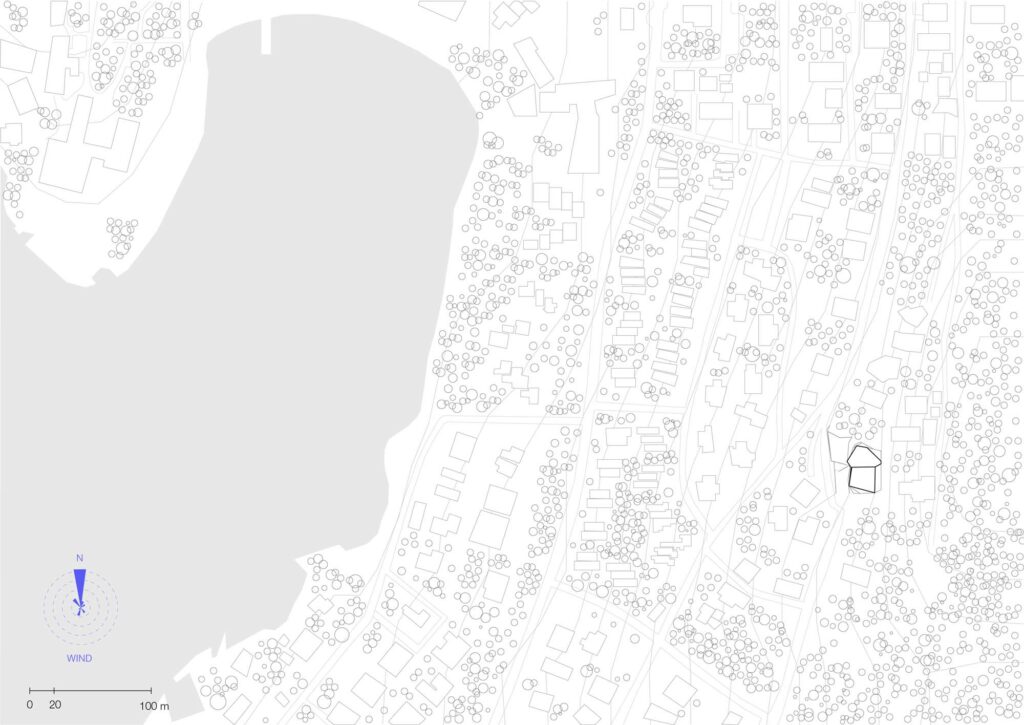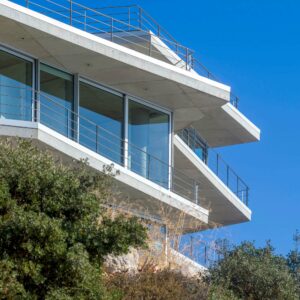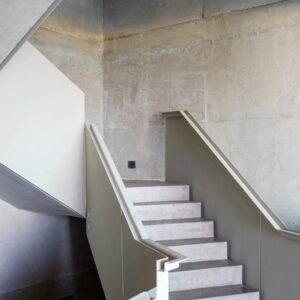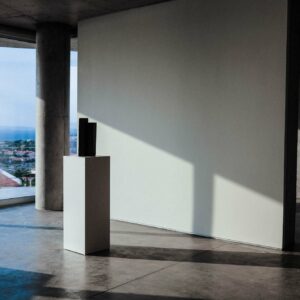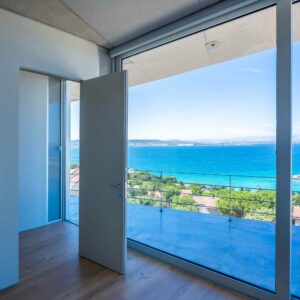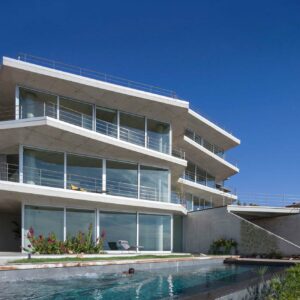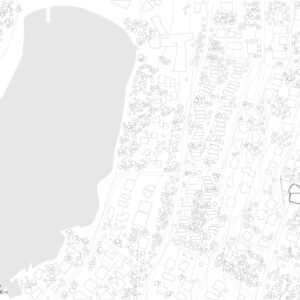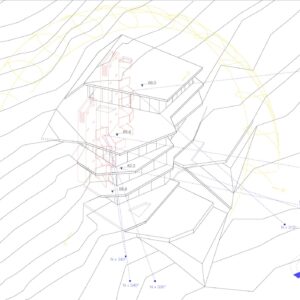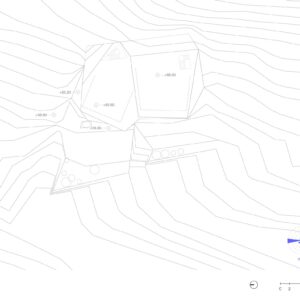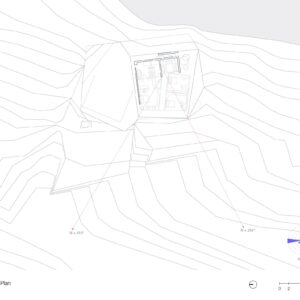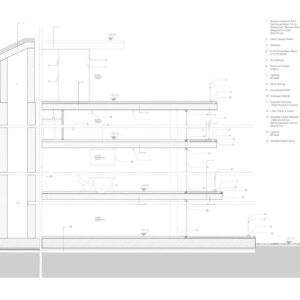
- 7 June 2024
- 9328 defa okundu.
Villa Topos
Salon, a summer residence project located on a limestone-dominated hill in Paşalimanı Bay, Çeşme district of İzmir, was designed by Alper Derinboğaz.
Villa Topos is a summer house project located on a limestone hill in Paşalimanı Bay in Çeşme district of İzmir, Turkey. The design takes inspiration from the sharp topography of the surroundings, transforming into a simple geometric structure that settles in the Aegean landscape. Contrary to the idea of separating structure from ground which is rooted in Classical, Villa Topos is buried into the topography in order to extend the relationship with the ground to climatise the complete structure with zero emissions. The building develops terraces in the continuation of abstract topography lines in order to multiply the structure-ground encounterings, increase the open areas, and break the western sun, while optimising the access.
Panorama and Staircase
The Building has a unique panorama within the Aegean landscape far from a flat horizon; the bay exhibits a theatre of ecology, a viewpoint full of activity. As you climb up to the site; the horizon, skyline and landscape of the bay recreates itself in different ways. While placing the staircase at the back of the structure, the aim was to leave the stage open to nature and to propose a dynamic framing of the view. Whereby, the staircase works as a cinematic apparatus that moves vertically, creating uninterrupted views of the bay.
Passive Climatization
The aim was not only to observe nature, but also to find foundational ways to better engage with it. Villa Topos is the first naturally climatized summer house in the region. Wind-catching chimneys with vents in the roof are built to avoid using any energy to climatise the building. They create a natural flow of ventilation throughout the building. The thermal mass settled on the ground provides heat stabilisation in the building benefiting from the constant temperature of the earth. As a result, the wind works as a natural machine to circulate clean air, and the earth works as another one to make the air cooler or warmer depending on the time of the year.
Thermal Mass
Reinforced concrete with a large thermal mass exists in various forms and purposes in the building; as a waterproof coat, structure, heat isolation, or decoration. In addition, the concrete increases the heat mass on the buried façade where the light cannot reach. The house takes about eight hours to catch the surrounding temperature. Thus, the thermal amplitude between night and day is balanced, and the reinforced concrete structure gives enough time to tolerate these changes.
Etiketler


